M2 Internship proposal for spring 2020.
Location: iBV Lab, Nice with regular meetings at I3S Lab, Sophia Antipolis.
Expected duration: 5-6 months.
Advisors: Rob Arkowitz (iBV), Sebastien Schaub, Laure Blanc-Féraud
Robert.ARKOWITZ@unice.fr, url{ http://ibv.unice.fr/research-team/arkowitz/}
sebastien.schaub@unice.fr url{https://www.researchgate.net/profile/Sebastien_Schaub}
blancf@i3s.unice.fr, url{http://www-sop.inria.fr/members/Laure.Blanc_Feraud/}
Context of the intership
Fungal infections cause significant morbidity and mortality worldwide. In particular, emph{Candida} species are major etiological agents of several life-threatening infections. For instance, emph{candida albicans} is a normally harmless commensal bacterium found on the mucosal surfaces in most healthy individuals, which can nonetheless cause superficial as well as life-threatening systemic infections. Its ability to switch from an ovoid to a filamentous form, in response to environmental cues, is a critical sign of its pathogenicity. The apical zone of the filament is densely packed with multiple highly dynamic membrane compartments, including secretory vesicles and Golgi cisternae. To understand the complex regulation of its apical polarized growth, it is critical to follow the movement of these compartments in a 3D setting, with high spatial and temporal resolution. Standard fluorescent microscopy cannot achieve this goal, hence the use of super-resolution microscopy techniques is necessary.
Goal of the internship
The goal of this internship is to develop, optimize and apply advanced super-resolution imaging approaches, in particular those taking advantage of fluorescent molecule blinking and their independent fluctuations in time, to study membrane traffic reorganization during filamentous growth in this human fungal pathogen. Several numerical algorithms have already been developed locally, others are available in the web. However, these techniques have not been tested on real images of apical zone of the filament, which states the question of defining the best acquisition protocol, adapting the observation model to take into account perturbations due to the real environment, and, crucially, defining parameter setting methods. The goal is to prepare samples and to define acquisition protocole to answer these questions, in close collaboration with student and permanent researchers expert in image processing.
Candidate profile
Second year of Master degree or Engineers School in Biology and BioInfo.
Knowledge in fluorescent microscopy and image processing softwares.
Practical information
Remuneration: internship gratification
To apply for this job email your details to blancf@i3s.unice.fr
